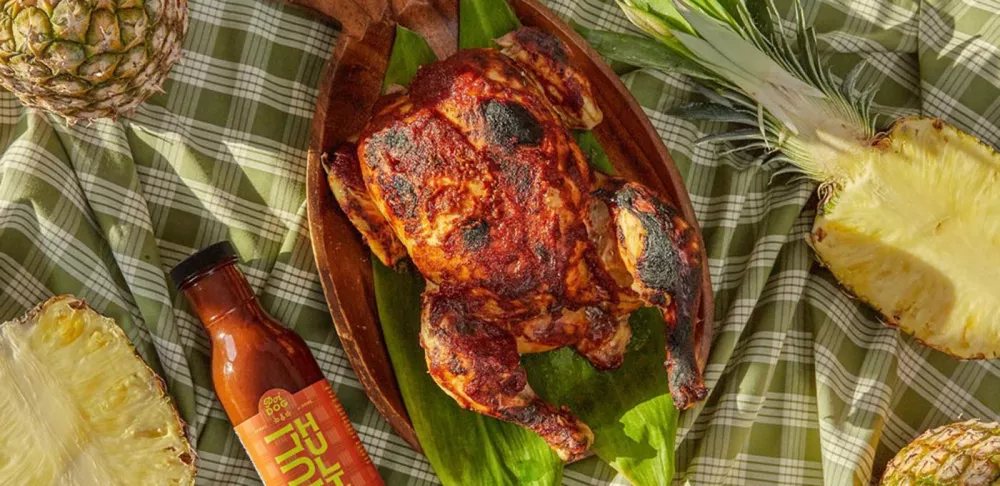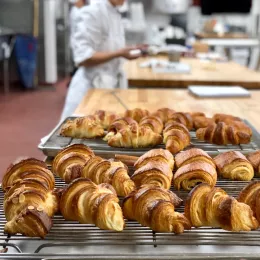According to a Pew Research study, about one in nine restaurants in America is a restaurant with Asian heritage. While it may be no surprise for those who crave Asian foods, this is nonetheless a huge number, considering that most Asian cuisine only started gaining mainstream popularity across the U.S. in the 1990s or later.
Of those Asian restaurants, however, a vast majority in the U.S. are represented by the cuisines of only a few cultures. Chinese, Japanese and Thai restaurants account for nearly 70% of all Asian restaurants in this country, with another approximately 20% consisting of Indian, Vietnamese and Korean restaurants. The remaining 10% consists of a wide variety of Asian cuisines, often representing regional cultures or fusion expressions.
While there are numerous underrepresented Asian cuisines in the U.S. that you should get to know — Malaysian, Pakistani, Goan, Mongolian and more — here, several chefs talk us through three cuisines that are on the rise.
Cuisine of Taiwan
While Taiwanese cuisine might have recognizable elements for those who love Chinese food, the cuisine of Taiwan, an island nation near China’s southeastern coast, is distinct.
“It’s indigenous, pure and simple,” says Jin-Ya Huang, founder of Break Bread, Break Borders, a social enterprise empowering refugee women economically through the storytelling of food and culture. “To experience the unique flavors of real Taiwanese food is truly spectacular gourmet, with wild ingredients, original spices and native species, foraged and prepared by the aboriginal tribes who hunted and gathered from the mountains and the plains across the island.”
She cites a dish known as zhutong fan, or “bamboo tube rice” — rice literally steamed in a bamboo tube with wild boar meat — as an example of that which is inspired by nature, a tenet of Taiwanese cooking, which exhibits the influence of various Indigenous peoples such as Atayal, Truku and Tsou tribes.
Colonization often plays a role in the evolution of indigenous cuisines around the world, including all three cuisines highlighted here.
“Taiwanese food is the political fusion of the eight major cuisines of mainland China, with local modifications and Japanese influences due to colonization,” Huang says.
Related: Types of Chinese Dumplings
She highlights a few important dishes and elements such as yu lai gu or “star jelly,” a gelatinous substance that forms on trees after rain, alivongvong, a dumpling-like preparation that’s cooked in woven pouches to resemble lunch boxes and flying fish, often prepared as a jerky and served with taro.
Look for Taiwanese restaurants tucked in among Chinese restaurants in communities with sizable Chinatowns such as Flushing, New York, Philadelphia, Pennsylvania, Rockville, Maryland, and especially throughout the Los Angeles area.

Filipino Cuisine
Given the Filipino population in the U.S. relative to the number of available Filipino restaurants, this may be the most underrepresented AAPI cuisine in the country. But Filipino cuisine is definitely on the rise, and important to get to know for culinary enthusiasts.
"It's an untapped cuisine that is ever growing,” says Daniel Corpuz, a Filipino-American Pastry Chef and Owner of Daniel Corpuz Chocolatier. “I am fortunate to say that through my work, I am able to define and even redefine what Filipino cuisine is.”
Meet the ICE grad serving up deliciousness in LA's Historic Filipinotown
“Filipino Cuisine speaks to the colonial past of the Philippines,” Chef Daniel says. “In a way, Filipino food is everything and nothing at the same time. Everything, because it's a fusion of Spanish, Japanese and American cooking, and nothing, because of how that colonial past has been able to influence what Filipino food is. What makes it unique is the complete usage of ingredients while having sharp and impactful flavors.”
While dishes and ingredients such as lumpia and ube have become mainstream, not to mention the proliferation of Filipino fried chicken chain Jollibee, Chef Daniel says he tries his best to showcase Filipino flavors beyond the well-known ingredients.
“I am able to utilize ingredients and flavors that not many are familiar with,” he says.
Chef Daniel often cooks with ingredients such as pandan, an aromatic palm leaf, kalamansi, a lightly bitter citrus hybrid and pili nuts, a sought-after, savory nut redolent of almond, macadamia and sunflower seed.
Chef Daniel highlights a few important Filipino dishes:
- Lumpia, a Filipino fried spring roll exhibiting Chinese influence, is “a great introduction to Filipino food for its approachability,” he says.
- Filipino chicken adobo, a slow-cooked chicken, is distinctive because of the sharpness of both the vinegar element and the amount of garlic.
- Sapin-Sapin is a Filipino dessert made “primarily using glutinous rice flour. It is a vessel for different flavors like coconut and other native flavors like jackfruit and ube,” Chef Daniel says.
Fast and fast-casual Filipino restaurants can be found throughout the country, but Chicago boasts the first Michelin-starred Filipino restaurant, Kasama.

Hawaiian Cuisine
“I think it's important for culinary students to pay attention to this last state of the U.S.,” says Kiki Aranita, owner of Hawaiian-inspired sauce brand Poi Dog, and Senior Editor for New York Magazine. “Hawaii is the most diverse state in the country, not just in terms of population, but in terms of environment and ecology, and we have our own culinary traditions that are unlike anywhere else in the world.”
With its extraordinary produce such as taro and sugarcane, and equally diverse history, the foods and dishes of Hawaii are especially dynamic. Similar to the cuisines outlined above, Hawaiian cuisine should also be considered in two parts.
“There’s a distinction between Hawaiian cuisine and Hawaii’s local food,” Aranita says. “The term 'Hawaiian cuisine' indicates cuisine that was made by Native Hawaiians, especially prior to Western contact. That said, a lot of Hawaiian cuisine has been very much influenced by its immigrants, who came to Hawaii during the sugar cane plantation era, or even a little before. So there's a lot of what we would consider Hawaiian food that does have elements of Chinese cuisine in it."
Numerous other cultures, both Asian and European, also intersected with Hawaii throughout its complicated colonial history. Hawaiian sweet rolls, for example, are actually Portuguese in origin. Spam features heavily given the influence of American GIs, combined with the necessity of canned goods in an area prone to hurricanes.
These diverse influences in part explain why Hawaiian food is unrepresented on the mainland, according to Aranita.
“We have a lot of Japanese, Chinese and Korean immigrants, which means that if you're from Hawaii, and you move to the mainland, you can scratch your itch for those foods by going to other restaurants,” she says.
It may be challenging to find a true taste of indigenous Hawaiian cuisine outside of Hawaii, but for a deeper dive than poke, thoughtful Hawaiian restaurants can be found not only in major U.S. cities such as New York and Los Angeles, but also in communities such as Burnside, Oregon, and Midvale, Utah.
Related: Product Spotlight: Black Vinegar






